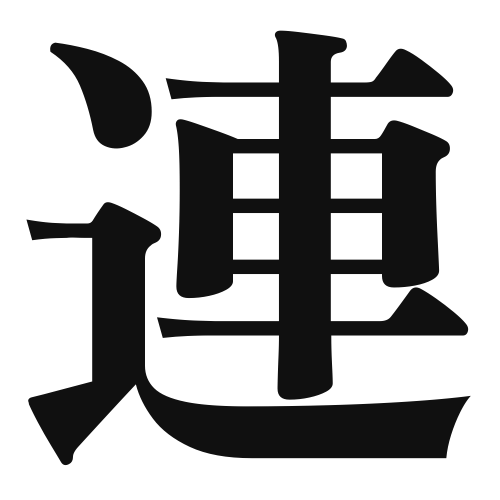1. Overview of Meaning
The kanji 連 (ren) generally means “to connect” or “to link.” It conveys the idea of joining things together, whether they are physical objects, concepts, or people.
2. Formation and Radical
Formation of the Kanji: The kanji 連 is a compound character (会意文字) that combines elements to convey its meaning. It consists of the radical 辶 (which relates to movement) and the character 連 itself, which suggests a connection.
Radical: The radical for 連 is 辶, which is associated with movement and travel, reinforcing the idea of linking or connecting.
3. Examples of Usage
Common Words and Phrases: Some frequently used words that include 連 are:
- 連絡 (れんらく, renraku) – contact or communication
- 連続 (れんぞく, renzoku) – continuity or succession
- 連盟 (れんめい, renmei) – alliance or federation
Example Sentences in Daily Conversation:
- 友達に連絡しました。
(I contacted my friend.) - この映画は連続して上映されています。
(This movie is being shown continuously.)
4. Synonyms and Antonyms
Similar Kanji: A kanji with a similar meaning is 結 (ketsu), which means “to tie” or “to bind.” While both kanji convey a sense of connection, 結 emphasizes the act of tying things together, whereas 連 focuses more on the idea of linking or connecting.
Antonyms: A kanji with an opposite meaning is 断 (dan), which means “to cut off” or “to sever.” This kanji represents the action of disconnecting or breaking a link.
5. Cultural and Historical Background
Relation to Japanese Culture: The concept of connection is significant in Japanese culture, where relationships and harmony are highly valued. The kanji 連 reflects this cultural emphasis on unity and togetherness.
Proverbs and Idioms: One relevant proverb is 連携プレー (れんけいプレー, renkei purē), which means “cooperative play” or teamwork, highlighting the importance of collaboration and connection in achieving common goals.
